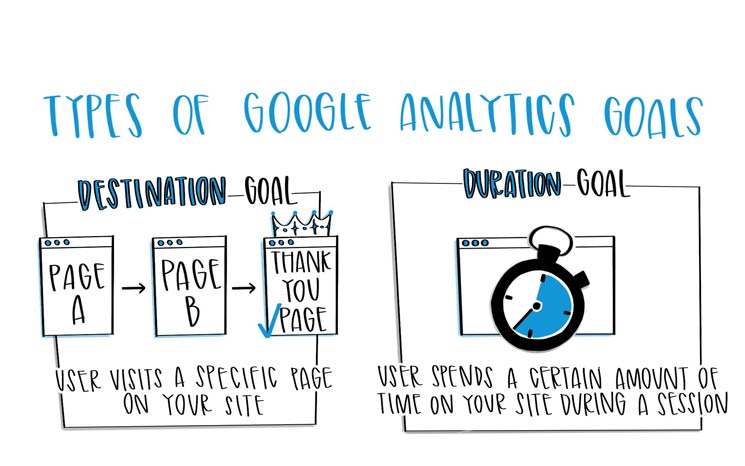What Data Is Google Analytics Goals Unable to Track and Why
What Data Is Google Analytics Goals Unable to Track and Why
Blog Article
Discover the Limitations of Google Analytics Goals: Unveiling the Data Kind That Remain Untrackable
As companies progressively rely on data-driven decision-making, recognizing the restrictions of devices like Google Analytics becomes extremely important. While Google Analytics Goals deal valuable insights right into user communications, there exist information kinds that avoid monitoring, presenting obstacles to an extensive understanding of individual habits.
Insufficient Customer Trip Tracking
Insufficient customer journey monitoring within Google Analytics can prevent the ability to properly examine user behavior. When the user trip is not completely tracked, there are voids in the information that avoid a detailed understanding of just how users communicate with a web site. This absence of understanding can bring about missed out on possibilities for optimization and improvements to the individual experience.
One typical concern with incomplete individual journey monitoring is the inability to see the full course that individuals take in the past completing a goal or leaving the site. Without this information, it is challenging to identify where users may be coming across obstacles or rubbing points that stop them from transforming. In addition, incomplete tracking can cover the effect of specific advertising efforts or site modifications on user behavior.
To address this limitation, it is essential to establish up proper monitoring systems within Google Analytics to catch the whole individual trip. This may involve setting up event monitoring, objective funnels, or making use of tools like Google Tag Manager to ensure that no important communications go unrecorded. By getting an extensive sight of the customer journey, internet site owners can make even more enlightened decisions to improve user engagement and drive conversions.
Acknowledgment Difficulties
Navigating via attribution difficulties in Google Analytics calls for a comprehensive understanding of just how various touchpoints add to the total conversion process. Attribution challenges develop from the complexity of modern-day consumer trips, where users engage with numerous networks prior to transforming.
One typical attribution challenge is the trouble in attributing conversions to the proper source, specifically in instances where individuals interact with numerous networks prior to converting. In addition, cross-device monitoring presents another acknowledgment challenge, as customers often switch between tools during their trip, making it challenging to track their communications effortlessly.
Offline Conversions
Given the difficulties related to connecting conversions precisely in online networks, the measurement of offline conversions provides a considerable opportunity for marketers seeking a much more extensive understanding of their customers' trip. Offline conversions describe actions that clients absorb the real world, such as making purchases in brick-and-mortar stores or over the phone, going to occasions, or involving with printed materials - what data is google analytics goals unable to track. These conversions are critical for companies that run both online and offline, as they offer valuable insights into the effectiveness web of advertising and marketing campaigns across different touchpoints
Tracking offline conversions generally positioned a substantial challenge for marketing experts, as it was challenging to link these activities back to specific on the internet interactions precisely. However, with developments in modern technology, such as the integration of CRM systems, unique identifiers, and voucher codes, organizations can now bridge the gap between online and offline data to get a much more all natural view of customer behavior. By successfully determining offline conversions, marketers can optimize their techniques, assign resources extra efficiently, and inevitably improve the overall customer experience.
Cross-Device Tracking
Cross-device monitoring plays a critical function in understanding the interconnected nature of customers' digital interactions across several devices. In today's omnichannel world, where users seamlessly switch over in between smartphones, tablets, and desktop computers, tracking their actions across these tools is vital for marketing professionals to acquire a comprehensive view of their consumer trip.
Additionally, personal privacy issues and guidelines such as GDPR and CCPA have additionally challenging cross-device monitoring. With customers demanding even more control over their information and increased restrictions on tracking innovations, marketers should discover privacy-compliant and cutting-edge means to attach customer interactions across devices.
Dynamic Content Engagement
Recognizing customer involvement with vibrant web content is critical in enhancing electronic advertising and marketing strategies for boosted target market interaction. Dynamic content refers to site components that change based upon customer actions, preferences, or other variables, providing a personalized experience. Tracking user communications with dynamic material presents challenges for traditional analytics devices like Google Analytics.
While Google Analytics can track standard communications like clicks and web page sights, it might struggle to record more nuanced engagements within dynamic content. what data is google analytics goals unable to track. Metrics such as time invested in particular dynamic components, float actions, or communications within pop-ups are frequently not easily quantifiable utilizing conventional click for source monitoring approaches. This limitation prevents marketing professionals' capability to fully realize exactly how users are involving with dynamic web content and tailor their strategies accordingly

Verdict
Finally, Google Analytics goals have constraints in tracking incomplete customer trips, attributing conversions accurately, recording offline conversions, tracking cross-device interactions, and measuring dynamic material engagement. These restrictions highlight the relevance of discovering additional tracking techniques and tools to acquire a much more detailed understanding of individual habits and conversions beyond what Google Analytics can offer.
While Google Analytics Goals offer important insights right into individual communications, there exist information types that elude tracking, posing challenges to a comprehensive understanding of individual actions.Incomplete user trip monitoring within Google Analytics can prevent the capacity to properly analyze individual behavior. When the user journey is not totally tracked, there are voids in the data that stop a comprehensive understanding of how customers engage with a website.One common concern with incomplete user trip monitoring is the inability to see the full path that users take in the past completing an objective or leaving the site. By acquiring an extensive view of the user trip, internet site owners can make even more informed choices to improve individual involvement and drive conversions.
Report this page